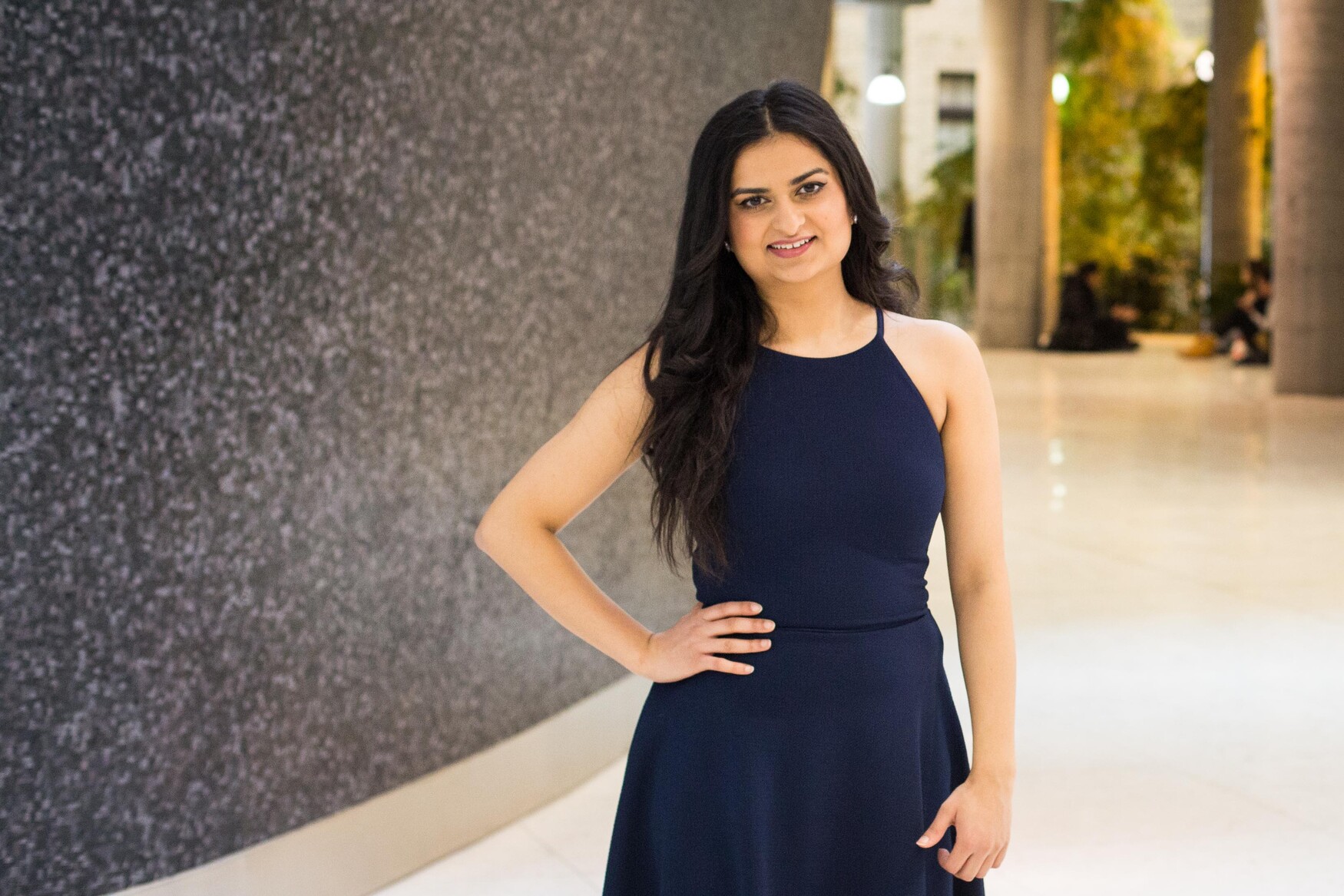

What’s the focus of your research?
My project focuses on the development of new nano- and micron-sized materials to deliver drugs to brain tumours. Currently, there’s no cure for glioblastomas, which are highly invasive brain tumours. One of the challenges is the blood-brain barrier (BBB), which prevents many drugs from reaching the brain and tumour cells. I’m trying to take advantage of properties unique to nano- and micron-sized particles to either bypass or transiently disrupt the BBB. This will allow me to enhance the delivery of otherwise impermeable drugs to brain tumours, ultimately opening the door to more therapeutic options for glioblastoma. Specifically, I’m trying to enhance the delivery of organic light-activated drugs called porphyrins, for targeted cancer phototherapy.
What interested you in pursuing this area of research?
During my undergraduate degree, I was drawn to the fields of synthetic and materials chemistry. I was enthralled by chemists’ abilities to apply fundamental scientific knowledge to create new molecules, materials and platforms that could impact the way diseases were treated and diagnosed. I really enjoy the creative design process and puzzle-solving that goes into materials development. The ability to engineer new materials from scratch that have potentially very real positive impacts on patients is extremely exciting!
What did receiving the Mr. Robert and Ms. Francine Ruggles Innovation Award mean to you?
This recognition was humbling and motivating. I’m surrounded by brilliant MD/PhD colleagues conducting impactful research. I was honoured to be chosen among such worthy candidates. Having trained in chemistry before entering the program, I have a traditionally unconventional research background and project. It was encouraging to see this diversity in research recognized, which I hope will reassure and motivate others pursuing their passion for biomedical research, regardless of their educational background or scientific discipline of interest.
What drew you to the MD/PhD program?
I was drawn to the quality of training I could receive through the U of T MD/PhD program as I pursued my goal of becoming a clinician-scientist. This ambition was shaped by my undergraduate and Master’s training. I did my undergraduate thesis project with clinician-scientist Professor Donald Weaver. His dedication to improving patient care through research and ability to navigate the space between clinical care and basic science sparked my interest in clinical medicine and inspired me to further pursue biomaterials research with Professor Paul Santerre for my Master’s degree. In the Santerre lab, I developed a passion for translational research and established my goal of combining this interest with practicing clinical medicine. The MD/PhD program is an ideal ground to explore my immediate scientific curiosity while staying in touch with the driving motivation of improving patient care. I saw, and continue to see, the MD/PhD program and a clinician-scientist career as a gratifying way of having a positive impact at an individual patient and family level, and more broadly to all patients affected by scientists’ biomedical interests.
What’s your favourite thing about the MD/PhD program?
The support within the MD/PhD program at U of T, whether its in the form of resources or people, is phenomenal. It grants trainees like myself with truly protected research time without being limited to field or time of study, which allows me to freely explore my scientific interests and get the most out of my PhD training. Most importantly, the program gives us a family of colleagues and mentors we can rely on for support through the ups and downs of what is a very dynamic and lengthy training program.
Where do you see yourself in 15 years?
The goal of becoming a clinician-scientist is alive and strong! In 15 years, I hope to be practicing as an academic clinician while leading a research team toward the development of materials that can either be applied directly for disease management, or be used as platforms to answer pertinent questions in medicine.
What do you enjoy doing in your spare time?
Outside the lab, I enjoy life chats with family and friends, engaging in mentorship and dancing, which has been an important part of my life since for as long as I can remember. I’ve been involved in Daffydil and the med Bollywood dance team as a dancer and choreographer over the last four years, and look forward to performing again in this year’s Daffy production! To be able to share my joy of dance with my family and friends in a way that also gives back to the community is special.